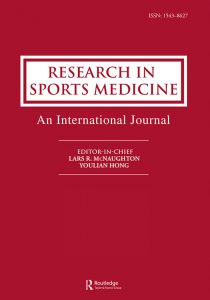Publications

Functional and morphological changes in shoulder girdle muscles after repeated climbing exercise
Authors: Sebastian Klich 1, Pascal Madeleine 2, Krzysztof Ficek 3, 4, Klaudia Sommer 5, Cesar Fernandez-de-Las-Penas 6, 7, Lori A Michener 8, Adam Kawczynski 9
Affiliations:
- Department of Paralympic Sport, Wroclaw University of Health and Sport Science, Wroclaw, Poland
- Department of Health Science and Technology, Sport Sciences – Performance and Technology, Aalborg University, Aalborg, Denmark
- Department of Physiotherapy, Academy of Physical Education in Katowice, Katowice, Poland
- Galen Orthopedic Center, Bierun, Poland
- Wroclaw University of Health and Sport Science, Wroclaw, Poland
- Department of Physical Therapy, Occupational Therapy, Rehabilitation and Physical Medicine, Universidad Rey Juan Carlos, Alcorcon, Spain
- Catedra Institucional En Docencia, Clinica E Investigacion En Fisioterapia: Terapia Manual, Puncion Seca Y Ejercicio Terapeutico, Universidad Rey Juan Carlos, Alcorcon, Spain
- Clinical Biomechanics Orthopedic and Sports Outcomes ResearchLaboratory (COOR Lab), Division of Biokinesiology and Physical Therapy, University of Southern California, Los Angeles, CA, USA
- Department of Biomechanics and Sport Engineering, Gdansk University of Physical Education and Sport, Gdansk, Poland
Journal: Research in Sports Medicine - February 2022 (DOI: 10.1080/15438627.2022.2042295)
-
Field & Applications:
- Sport
- Muscle development / Performance
- Fatigue / Overtraining
This study aimed to investigate the acute effect of repeated climbing actions on functional and morphological measures of the shoulder girdle.
Fifteen male indoor climbers participated in this study. All the climbers declared route level 6a+, as the best climbing grade (French climbing grade scale). Functional (range of motion – ROM and muscle strength), and morphological measurements (muscle/tendon stiffness and thickness) after a repeated climbing exercise protocol were analysed.
The ROM and muscle strength showed significant decreases from baseline to Immediate-Post (IA) as well as significant increases from IA to 1 h-Post for all movements (p ≤ .001 for all). Muscle stiffness showed significant increases from baseline to IA after as well as significant decreases from IA to 1 h-Post for all muscles (p ≤ .001 for all). However, the thickness showed significant increases from baseline to IA for supraspinatus tendon and muscle thickness and occupation ratio (p ≤ .001 for all), while a significant decrease was observed in acromiohumeral distance (p ≤ .001). Significant decreases from IA to 1 h-Post were found for muscles/tendons and occupation ratio (p ≤ .001 for all), while a significant increase for AHD (p ≤ .001).
Our data demonstrated acute alterations in tendon thickness due to acute signs of implement symptom in climbers.
Keywords: muscle stiffness, thickness, overhead, fatigue, climbing
The present study showed for the first time changes in shoulder function and morphological properties after repeated exercise protocol in recreational indoor climbers. Significant increase in supraspinatus thickness, with simultaneous reduction in AHD resulted in greater occupation ratio. Our study demonstrated acute alterations in tendon thickness due to acute signs of implement symptom in climbers. This work provides an important finding for the evaluation of morphological properties using both ultrasonography and myotonometry in conjunction with functional measurements.


